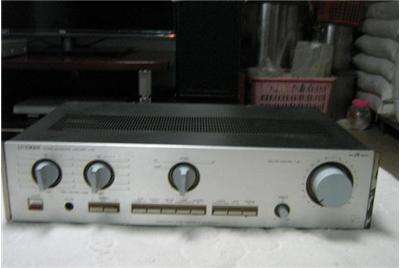Dynamic class a power amplifier circuit production test, the majority of circuit dynamic bias is not good and can not accurately control the offset, but can not but another shortcut to innovation and success. This circuit is different from the traditional OCL circuit. The following describes its working principle and debugging points.
First, the circuit principle and characteristics
MOS FETs Q1, Q2 and Q4, Q5, Q9, Q10, Q11 and related components constitute a common source-to-common-base and re-base input stage. Q1 and Q2 convert the input voltage into a signal current. Q4 and Q5 are set to reduce the power consumption of Q1 and Q2. Q9, Q10, and Q11 are common-base configurations and have no current gain. They can be regarded as part of the input stage. Their role is to change the direction of the signal current. This current is converted into a voltage signal direct-drive output tube via R17 and R18. This circuit is concise, in one go, and the bipolar transistors in all channels are driven by current sources, and do not generate odd harmonics that fans worry about.
The main difference between this circuit and the traditional circuit is two points: One is that the input stage uses ultra-conventional large quiescent current, each tube reaches 30mA. The benefit is that the driving force of the output tube is strong, and the dynamics are large, the distortion is small, and the linearity is good, and the curved part of the characteristic curve of the field effect tube is crossed. The timbre response is quite different from when using smaller currents. The author tried to reduce the current of Q1 and Q2 to 8mA, and the original mellow tone became hard to stay. The second is the dynamic bias circuit. The traditional OCL circuit is to sandwich the constant voltage tube Q8 between the two base (gate) poles of the output tube, the potential of which is floating up and down with the output voltage, and the potential of Q8 in this circuit is fixed, which is favorable for improving dynamic bias. The accuracy of the home. In the static state, the constant voltage circuit composed of Q8 etc. provides stable bias to Q6 and Q7, and adjusts W2 to change the quiescent current value. The dynamic biasing process is: when the output is negative, the output signal is divided by R22 and R23. The base of the Q8 is shunted by D8, W2, and R21. The voltage across Q8 rises, the currents of Q6 and Q7 increase, and the currents of Q9 and Q11 increase. , And then increase the output tube current. The half-wave rectifier circuit composed of D8 and C12 stores the negative potential on C12 when the output is negative half cycle, and provides the same offset for the positive half cycle output as the negative half cycle, and the time constant of C12 charging is less than its discharge The time constant over which the voltage is relatively stable over a period of time. In this way, the circuit will automatically adjust the operating current of the last stage tube to make it work in the Class A state, depending on the level of the output voltage. Choose the ratio of R22 and R23 reasonably according to the load impedance value, can get the accurate control quantity and the excellent dynamic bias linearity.

Second, debugging points
1. Static debugging. After confirming the installation is correct, do not install the output tube, short-circuit the output to ground, power, adjust W1, W2 so that R17, R18 voltage close to the threshold voltage of the output tube, power off and install the power tube, remove the short circuit , Disconnect R22, adjust W2 so that the quiescent current of the output tube is about 250mA, adjust W1 to make the output zero potential, and heat the machine for half an hour.
2. Dynamic bias circuit debugging. Connect R22, the output is terminated with a high-power (wirewound) resistor that is consistent with the load impedance. Note that the resistor power P ≥ V squared c1/R, short circuit C6, so that the circuit becomes a direct current amplifier, the upper output transistor Q14 drain Connect an ammeter to the output terminal and connect it to a voltmeter. Slowly adjust W1 so that the potential of the output gradually approaches from zero to full scale. The current value of Q14 should decrease slowly with the decrease of the potential at the output terminal, but it must not be turned off. When the full range is negative, the current of Q14 is more suitable at 50mA. Otherwise, the value of R23 should be changed. Callback W1, so that the output potential is re-zero, remove the C6 short-circuit line and the output end of the dummy load, then listen to the speaker.
Third, pay attention to matters
1. The +45V power supply must be regulated, otherwise the quiescent current will fluctuate with the fluctuation of the power supply voltage. The positive and negative 30V power supply must have sufficient energy. 2. Q4, Q5, Q9, Q10, Q11 must add heat sinks. On the same heat sink, the use of thermal coupling makes the output zero potential very stable; 3. Q1 and Q2, Q14 and Q15 must be paired to get on the machine, and the rest of the symmetrically used tubes can be paired best, but not strict. 4.Q1 and Q2 can not use junction tube. Because the transconductance of the junction tube is too low, the gain of the whole machine will be seriously insufficient. If the junction tube is not required, the resistance value of R17 and R18 must be increased and the output tube must be driven. 5. If the heat is unstable, Q3 will cause quiescent current drift. If this is the case, consider its temperature compensation. 6. When welding MOS tube, pay attention to anti-electrostatic breakdown. 7. When Q1 and Q2 are badly purchased, K214 can be used instead, and Q4 and Q5 can be canceled to make the circuit more concise.
Headband Headphones have good sound field and are comfortable to wear, Bluetooth Headband Headphones can avoid scratching the ear canal; the sound quality of high, medium,and bass are very good, have a good sense of hearing even when playing symphony; The midrange effect of the headphones is thick, pop songs' hearing effect is very contagious, music effect is great.
Advantages:
1: Sound field is good, comfortable to wear.
2: No in-ear, avoid scratching the ear canal.
3: longer time to use, compare to in-ear earphone.

Headband Headphones,Wireless Headband Headphones,Headband Earphones,Bluetooth Headband Headphones
Shenzhen Linx Technology Co., Ltd. , https://www.linxheadphone.com